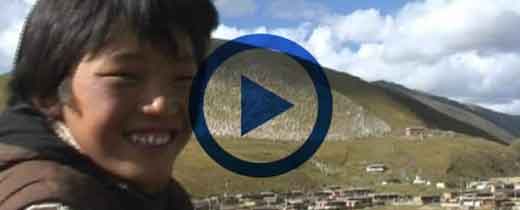Cona County, also known as “Tsona County“, is a county under Shannan City. It means “in front of the lake” in Tibetan.
There are many tourist attractions in Cona County. It is not only appreciate natural scenery of Lebu (Lekpo) District, customs and culture of Monba people, but also visit the “Shibuzha” holy land and the “Dongcang” pilgrimage site. The seabuckthorn forest in Quzhuomu Township is also worth a visit. Every seabuckthorn tree there has a growth history of thousands of years.
The 6th Dalai Lama Tsangyang Gyatso, known as the “Living Buddha of Love Songs“, was born here, which also brings a touch of sad romance to this place.
Location
Cona County is located in the southern tip of Tibet. It is one of the border counties of Tibet Autonomous Region. It belongs to Himalayas in the mountain – lake basin valley in southern Tibet, with rich flora and fauna.
It is adjacent to Lhozhag County and Comai County in northwest, Lhunze County to northeast, Bhutan to west, and India to south.
The county seat is Cona town which is 4380 meters above sea level, and about 400 kilometers from Lhasa City and 220 kilometers from Shannan City.
Best time to travel
From June to September
Local climate
Subtropical mountains humid and semi-humid monsoon climate
Most popular sites
Nari Yongcuo lake, also known as “Nara Yutso Lake“, is the largest lake of Cona County, with a total area of 58 square kilometers, like a sapphire inlaid among snow-capped mountains and grasslands. It is 180 kilometers away from Tsetang Town and 36 kilometers away from Cona County seat. The lake is 4,900 meters above sea level, and faces the Kungbugang Snow Mountain which is at 6505 meters above sea level to the west. The lake is crystal clear, with snowy mountains, blue sky, and white clouds reflected in it. Due to the blue water of the lake, it is often unclear whether the blue sky is reflecting the lake water or the blue sky is reflecting the lake water.
Ancient sea-buckthorn forest is located in Quzhuomu Township. There are approximately 2,000 mu of ancient sea-buckthorn forest along the Niangmu River valley. The height of the sea-buckthorn forest is about 15 meters and the tree circumference is 4.5 meters thick the most. This thousand-year-old sea-buckthorn forest belongs to the wild willow-leaf sea-buckthorn forest. It is called “Raxin” by locals, which means soul tree in Tibetan, that is, the tree on which the soul depends.
Lebugou, also known as “Lekpo valley“, is a scenic area on south side of Kanggeduo Mountain in Cona County, and is the main settlement of Menba tribe. According to legend, there is also the practice of Padmasambhava.
Zhatong Monastery, also known as “Dratong monastery“, is located in Zhatong Village in northeast of Cona county seat. It was built on a high terraces by Luoqu river about 3700 meters above sea level. Its full name is “Tashi Tongmai Monastery”, which was built in 1489. Belongs to Kagyu Pa. In 1951 (Year of Iron Horse of Tibetan Calendar) earthquake caused damages to this monasterye, and it was also destroyed during the “Cultural Revolution”, Dukang Hall was spared only
Juela Monastery, also spelled as “Jola Monastery“, is located on a hillside about 400 meters south of Juela Township, northeast of the county seat, with an altitude of 3800 meters. The full name is “Jola Totan Chugor Lexe Dagjeling Monastery”. It was built in 1447 with traditioan of “Bodong Kagyu pa”, which incorporate teachings of Nyingma pa, Sakya pa, and Gelug pa, and are popular in Shannan City. The monastery’s rules are strict, prohibiting monks from engaging in production, nor marrying wives and having children.
Geography and climate
The border of Cona County is 268 kilometers long, of which the part with India is 213 kilometers long, and the part with Bhutan is 55 kilometers long, covering an area of 34,979 square kilometers. The actual control area is about 10094 square kilometers.
Himalayas traverses Cona County which is high in north and low in south, with a relative elevation difference of more than 7000 meters. The highest elevation is 7,060 meters and the lowest elevation is 18 meters.
To north of Kanggedo Mountain is a plateau mountain area with an average elevation of more than 4,000 meters, and the elevation decreases to south.
Cuona County’s climate can be roughly divided into two types:
Subtropical mountain semi-humid and humid climate on southern of Himalayas
Plateau alpine climate at northern foot of Himalayas
Among those, Subtropical mountain semi-humid and humid climate on southern of Himalayas is characterized by humid and rainy, short sunshine time, unclear dry and rainy seasons, with annual sunshine hours of 2,589 hours, annual frost-free period only 42 days, and annual precipitation of 384.3 mm. Annual average temperature -0.6℃;
Plateau alpine climate at northern foot of Himalayas is dry and less rainy, with long sunshine hours, cold all year round, windy weather in winter and spring and frequent snow disasters. The warm season is short and cool, with a lot of rainfall, small temperature difference between day and night, average temperature of the hottest month is 7.8℃, and the extreme maximum temperature is 18℃ (September 3, 2007); the cold season is long and very cold, windy and snowy, and temperature difference between day and night is large. Average temperature of the coldest month is -10℃, the extreme lowest temperature is -37℃ (December 20, 1981)
Population and ethnicity
As of end of 2013, Cuona County had a total population of 20,000, of which Tibetans accounted for 96% of total population, in addition to Han, Monba, Hui and other ethnic groups
Brief History
During Tubo Dynasty, Cona area was under jurisdiction of “Yo Ru” (“Ru” is administrative name of ancient Tibet)
In Yuan Dynasty(AD 1271-AD 1368), it was under jurisdiction of Zhayuwa Wanhu
In 1354 AD, Phagmo Drupa regime established “Zong” in Cona, which was called Cona Zong
In 1912, Kashag regime established “Jiqiao” in Shannan area, Cona area was under jurisdiction of Shannan Jiqiao.
In 1959, Cona Zong and Derang Zong were merged to form Cona County, which was under jurisdiction of Shannan Commissioner’s Office.
In 1978, Cona County belonged to Shannan District Administrative Office.
In 2016, Shannan Prefecture was abolished, and prefecture-level Shannan City was established, and Cona County was under jurisdiction of Shannan City.




